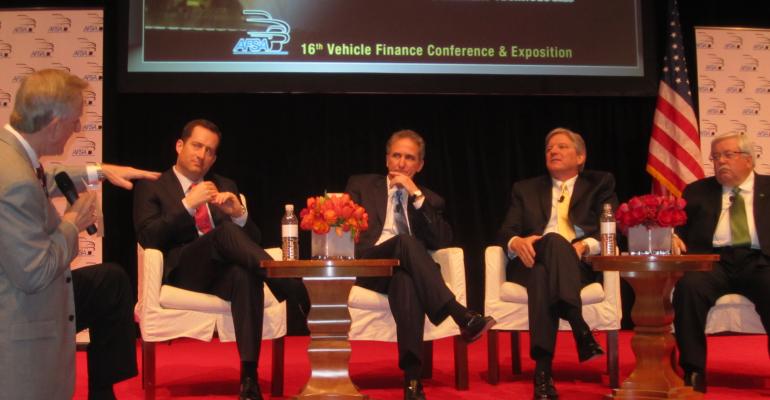LAS VEGAS – Auto leasing is like gambling in this town: It’s great when you win; dangerous if you play recklessly.
Some auto makers lost a bundle desperately using leasing to move the vehicles that were being pushed on a market that didn’t really want them.
Chrysler and General Motors, in particular, lost their shirts on the bad bet of sub-venting lease deals for overproduced vehicles that carried poor residuals because of the glut.
Unable to sustain that no-win situation, cash-strapped Chrysler and GM pulled out of leasing in 2008, a prelude to both entering bankruptcy.
“It was tough,” says Thomas Gilman, who headed the defunct Chrysler Financial at the time and now is president and CEO of TD Auto Finance. “When you liquidate a leasing portfolio, you learn a lot.”
He had little choice but to end such a money-losing proposition under the circumstances. Still, the two Detroit auto makers’ quick exit from leasing stunned dealers who heavily depended on it.
“We had dealers in the northeast who panicked because 90% of their business was leasing,” Gilman says at the American Financial Services Assn. vehicle-financing conference held here in conjunction with the National Automobile Dealers Assn. convention.
In a more disciplined way, leasing is making a comeback. That delights dealers who say it is a good way to stay connected with customers.
“I’d rather see people lease than buy,” says William Underriner, a Montana dealer and the 2012 NADA chairman. “At the end of a 24- or 36-month lease, the customer is back at the dealership deciding what to do next.”
An advantage for dealers and auto makers’ financial units is that they know exactly when lessees will be back in the market for a new vehicle, he says. Direct marketing to them can begin months before the expiration of their leases.
“We’ve seen a leasing resurgence,” says Gary Reynolds, a Connecticut dealer. “Leasing is hard to do if residuals are low. But if you keep residuals high enough and accurately predict what they will be when a vehicle comes off lease, auto makers can be in leasing without spending a lot of money.”
Done right, leasing is a financial product that benefits everyone: consumers, dealers, auto makers and their financing subsidiaries, says Tom Webb, chief economist for Manheim Consulting.
“In 2011, leasing, for the most part, was done right,” he says. “It was targeted to customers with good credit who like to trade on a regular cycle. And projected residuals were not overly inflated.”
Leasing increased to 2.1 million cars in 2011, a 17% increase over 2010 and an 85% increase compared with the low-point of 1.1 million leases in 2009, Webb says.
He notes auto makers are taking a conservative approach to leasing compared with the go-go days when leasing was rampant and often used as a way to move the metal and put consumers in cars they otherwise couldn’t afford.
“Leasing once was huge for Ford, but it put all its eggs in one basket,” says Don Chalmers, owner of Don Chalmers Ford in Rio Rancho, NM. “It led to bad residuals.”
If an auto maker uses brand strength and production restraint to keep residuals high, leasing doesn’t become a snake-eyes roll.
“If you are going to be in the leasing game, you need to know the products you are leasing,” says Andrew Stuart, CEO of Volkswagen Credit. “That’s where captive companies have a huge advantage.”
Of the 324,000 vehicles VW delivered in the U.S. last year, 50% of them were leases. Strong residuals allow the auto maker to profitably lease so many vehicles, Stuart says.
When the auto industry gets hyper-competitive, the temptation is to use leasing in dangerous ways.
“Leasing is not right for every family in America,” says John Hyatt, president of Bank of America’s Dealer Financial Services. “Historically, it was used as a tool to get people in a car they probably couldn’t otherwise afford. That wasn’t a good idea back then.”
Nor is it a good idea now, Gilman says. “We are starting to see things that were done before, and I’m worried about it.”
[email protected]


